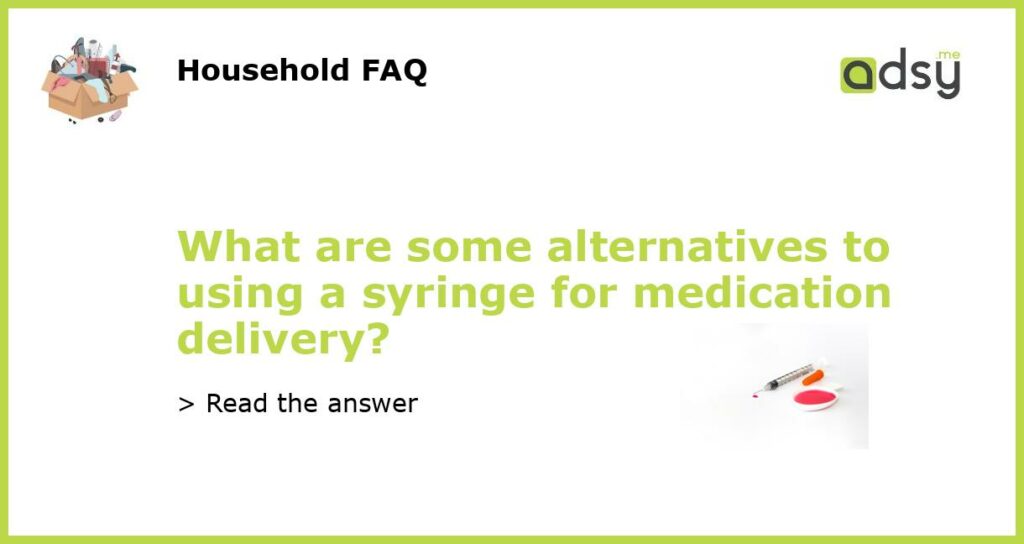Inhalers
Inhalers are a popular alternative to using a syringe for medication delivery, especially for respiratory conditions such as asthma and chronic obstructive pulmonary disease (COPD). Inhalers deliver medication directly to the lungs, providing fast relief for symptoms like wheezing and shortness of breath. There are two main types of inhalers: metered-dose inhalers (MDIs) and dry powder inhalers (DPIs). MDIs use a pressurized canister to release a measured dose of medication, while DPIs require the patient to inhale to activate the delivery of the medication.
Transdermal Patches
Transdermal patches are another alternative to syringe-based medication delivery. These patches contain medication that is released slowly through the skin and absorbed into the bloodstream. They are commonly used for hormonal therapy, such as birth control patches or hormone replacement therapy patches. Transdermal patches have the advantage of allowing medication to be delivered over an extended period of time, eliminating the need for frequent dosing.
Oral Medications
Oral medications, such as pills or liquids, are the most commonly used method of medication delivery. This method is convenient and easy to administer, making it a popular choice for both patients and healthcare providers. Oral medications are swallowed and then absorbed into the bloodstream through the digestive system. They are widely available and can be prescribed for a variety of medical conditions. However, oral medications may not be suitable for patients who have difficulty swallowing or have gastrointestinal issues that impact absorption.
Topical Creams or Gels
Topical creams or gels are used for localized treatment, typically for skin conditions or pain relief. These medications are applied directly to the skin, where they are absorbed and work locally. Examples include antibiotic creams for skin infections and topical analgesics for joint or muscle pain. Topical medications have the advantage of targeting a specific area and avoiding systemic side effects that can occur with other methods of medication delivery.
Intravenous Infusions
For certain medications or medical situations, intravenous (IV) infusions may be necessary. IV infusions involve delivering medication directly into the bloodstream through a vein using a drip or syringe pump. This method allows for precise control over the dosage and rapid delivery of medication. IV infusions are commonly used in hospitals or healthcare settings, especially for critical or acute conditions. They may also be used for long-term treatments, such as chemotherapy or intravenous antibiotics.






